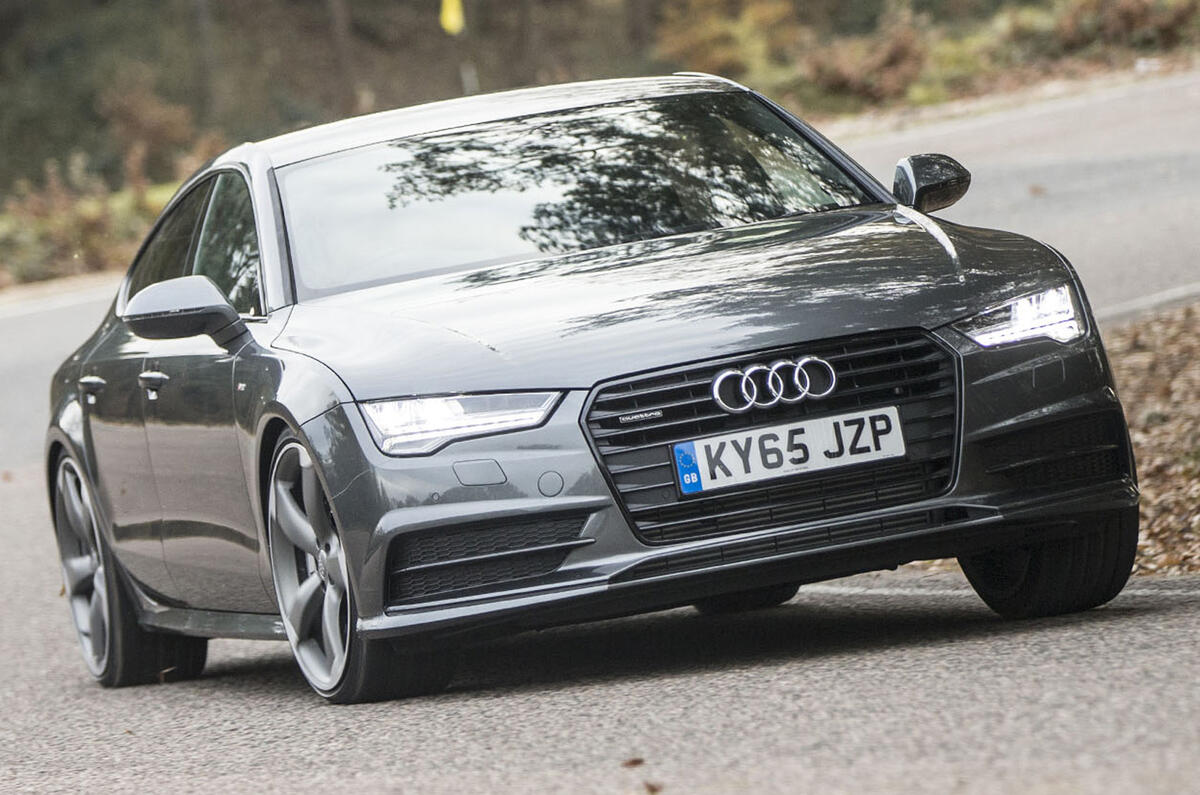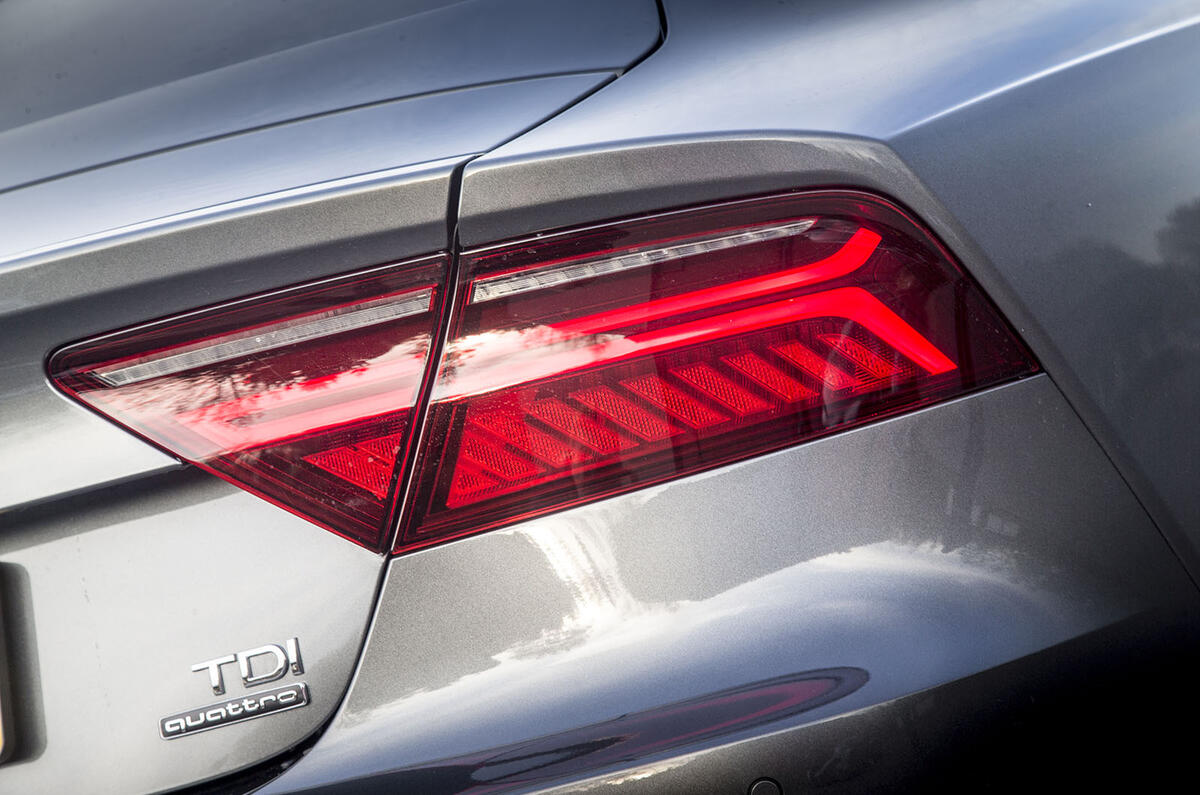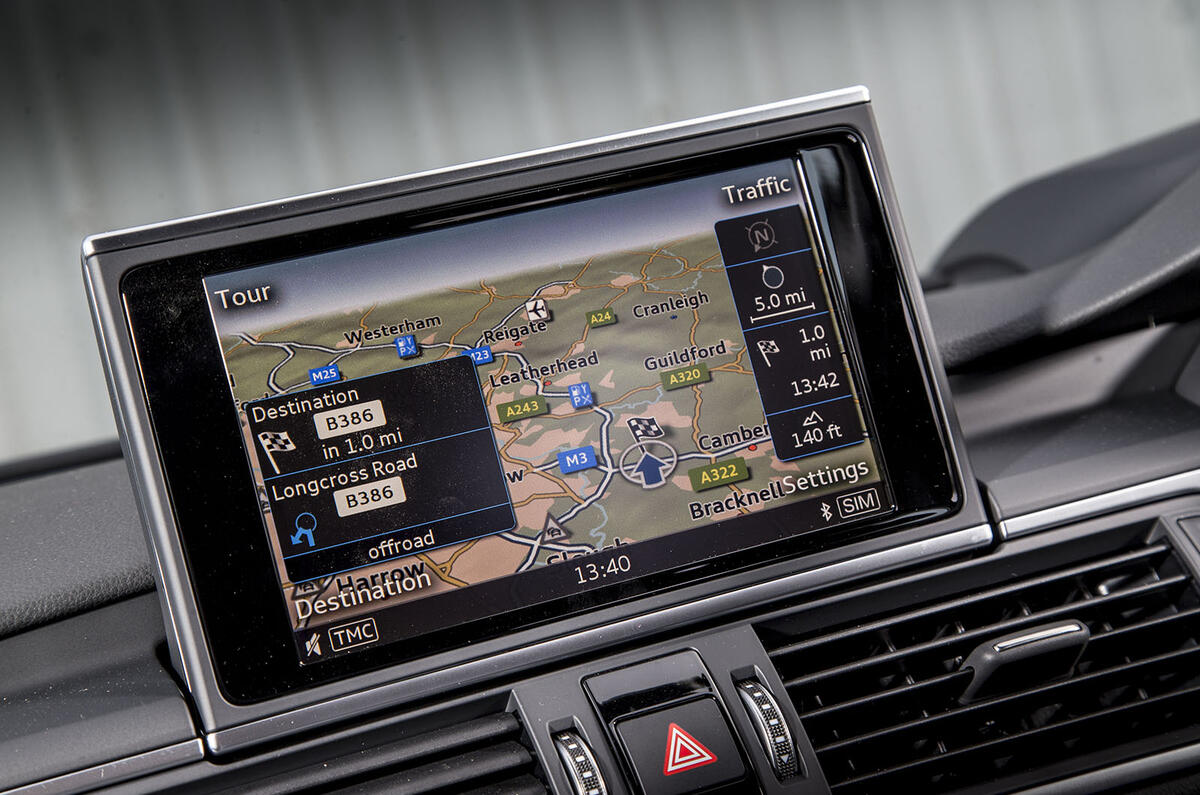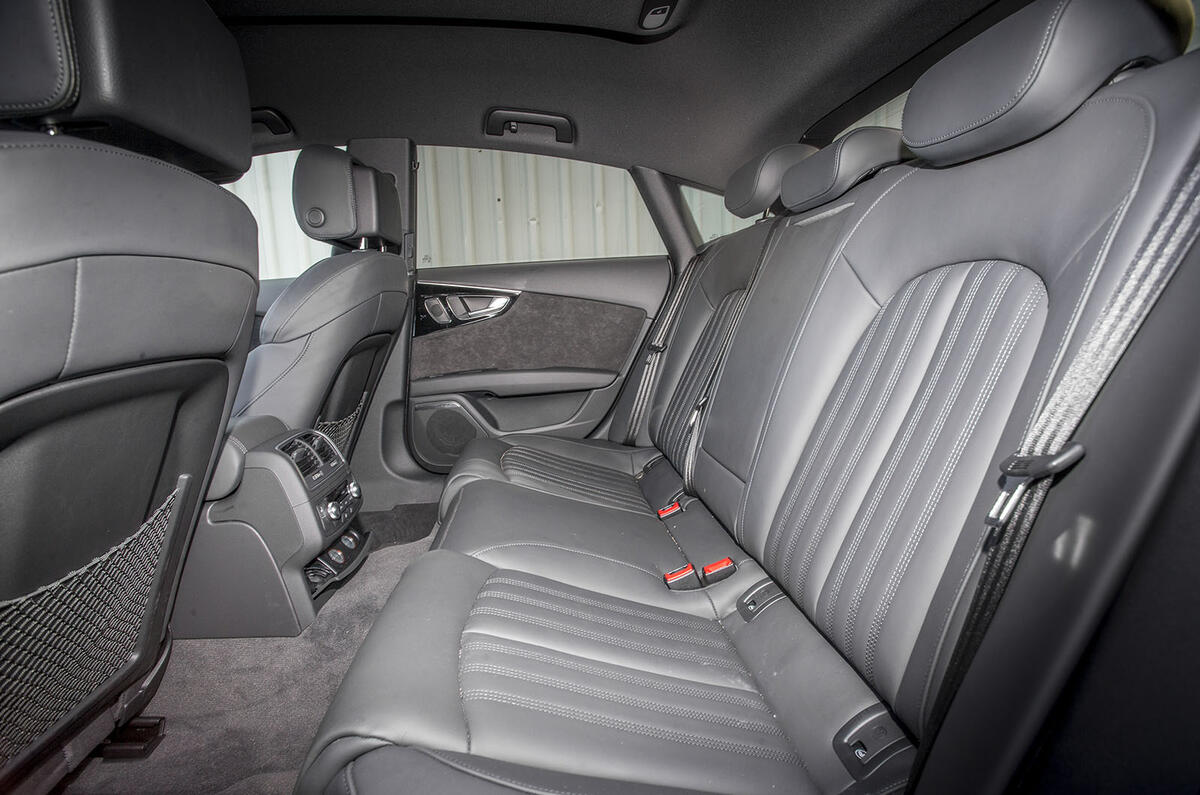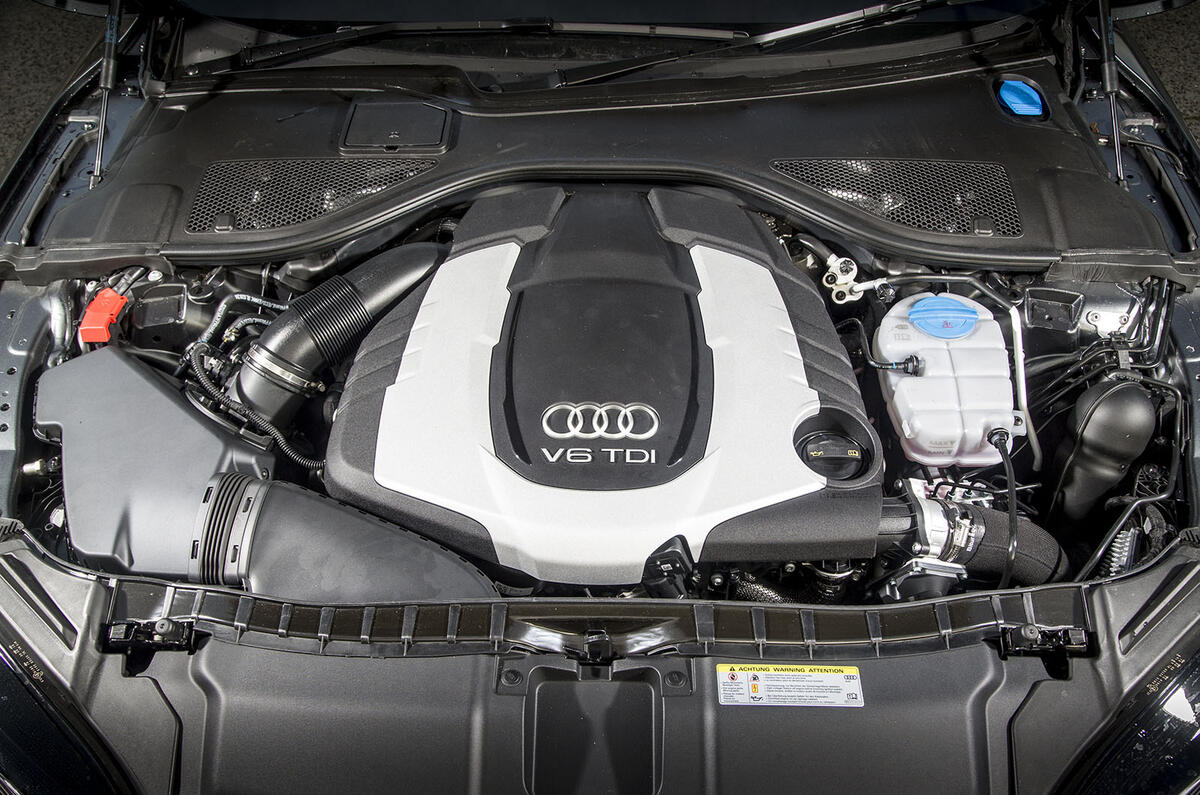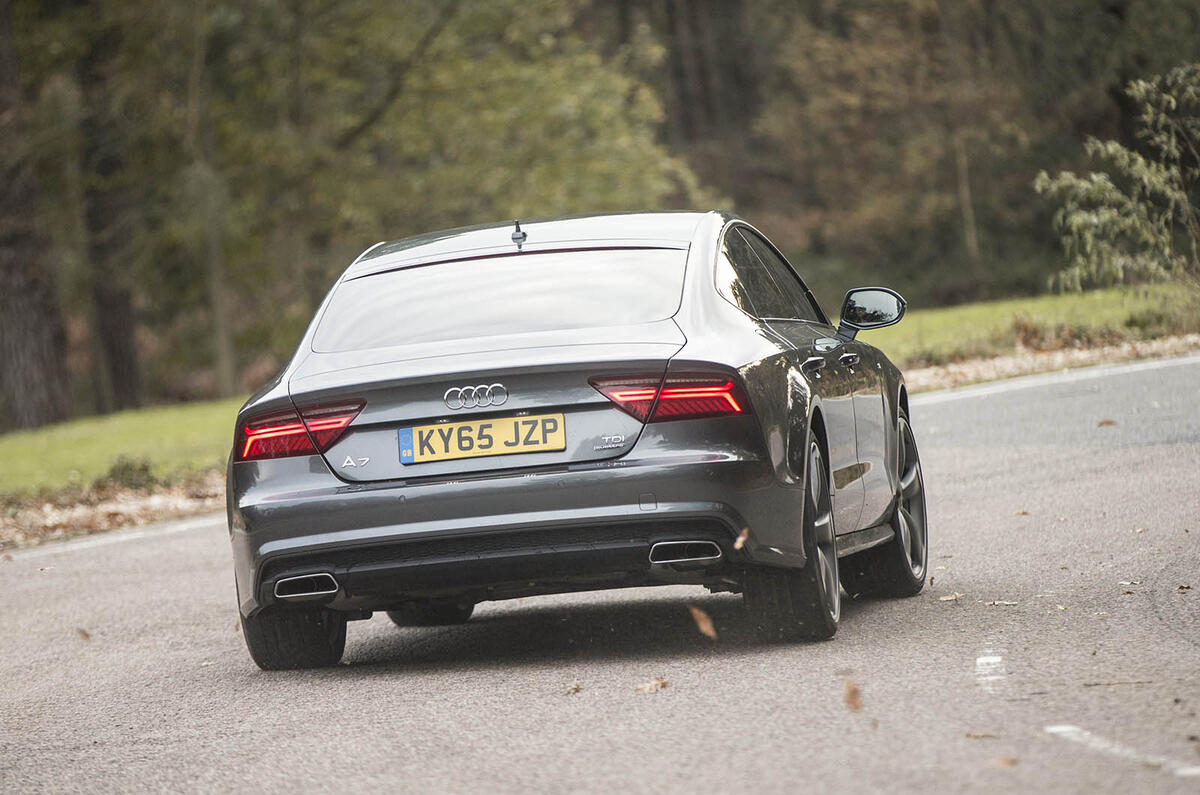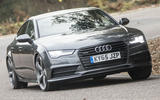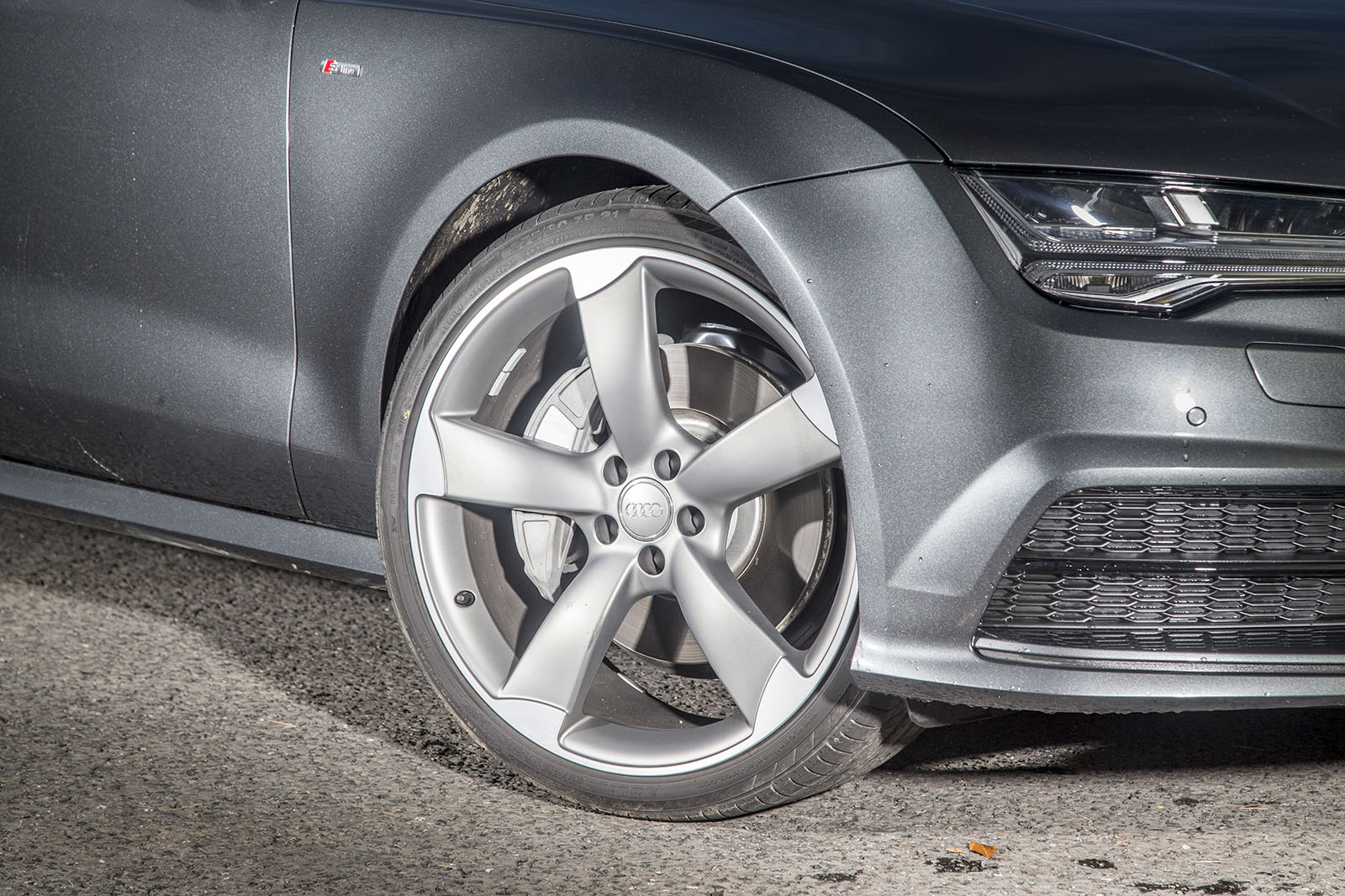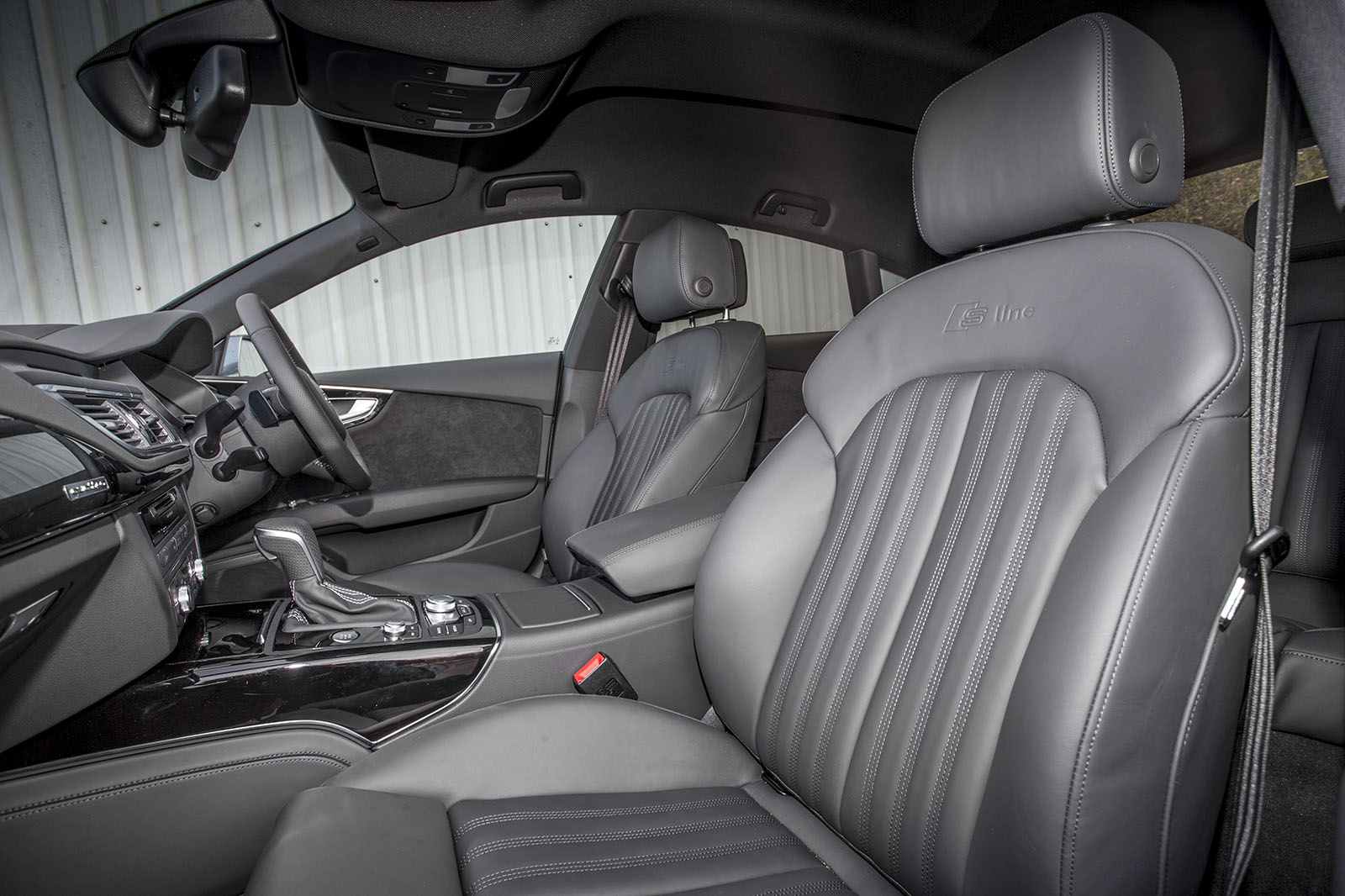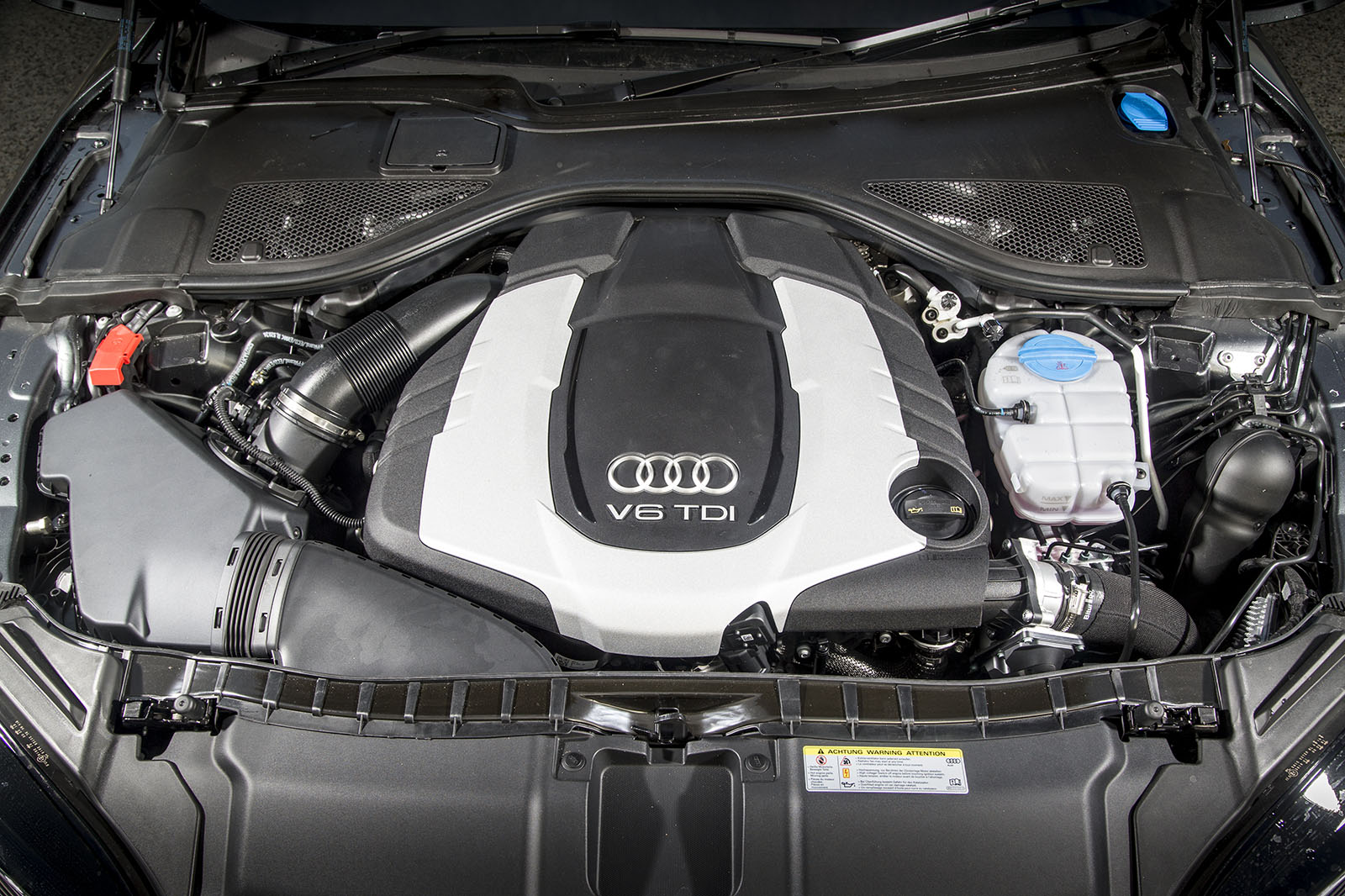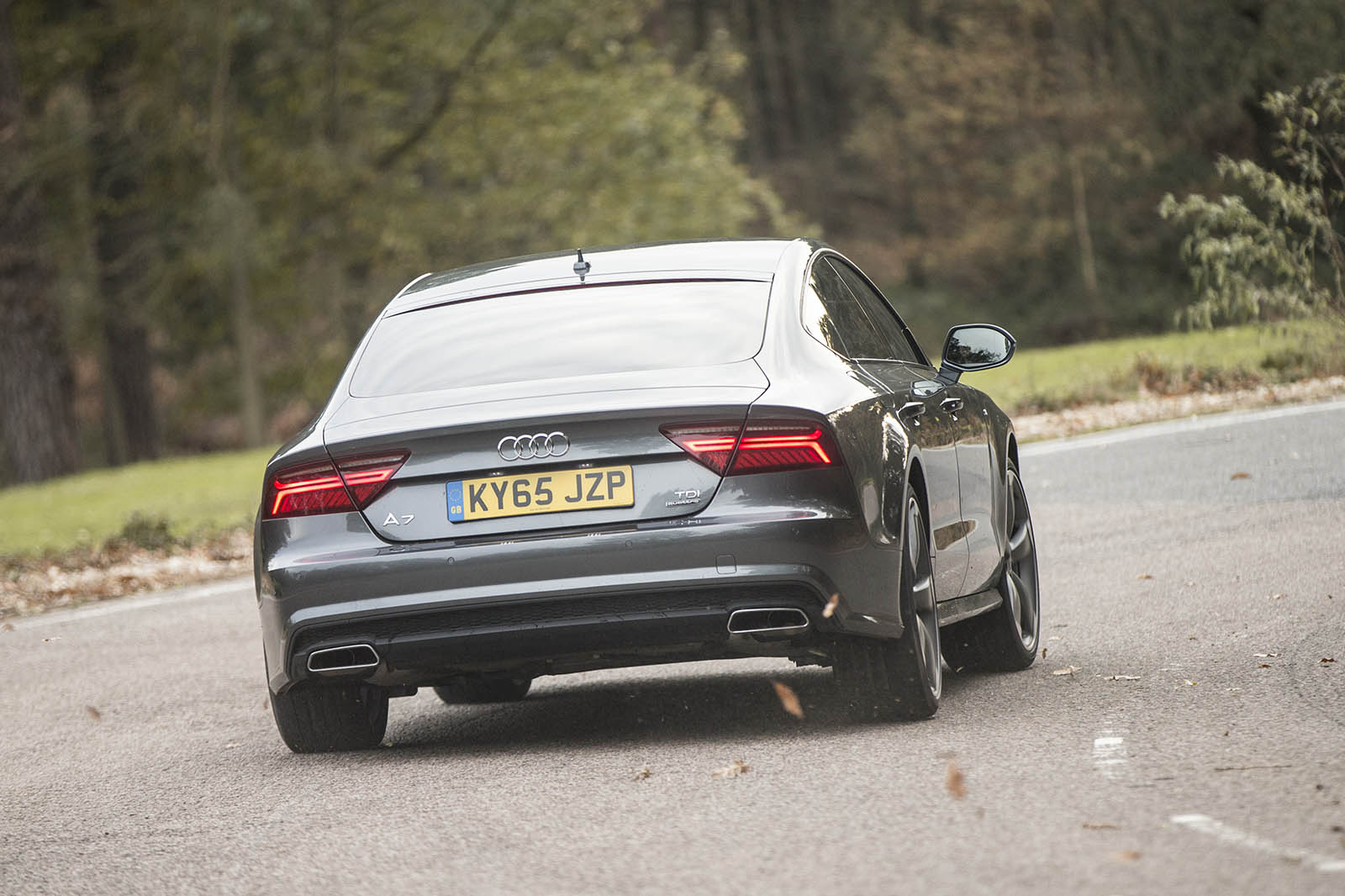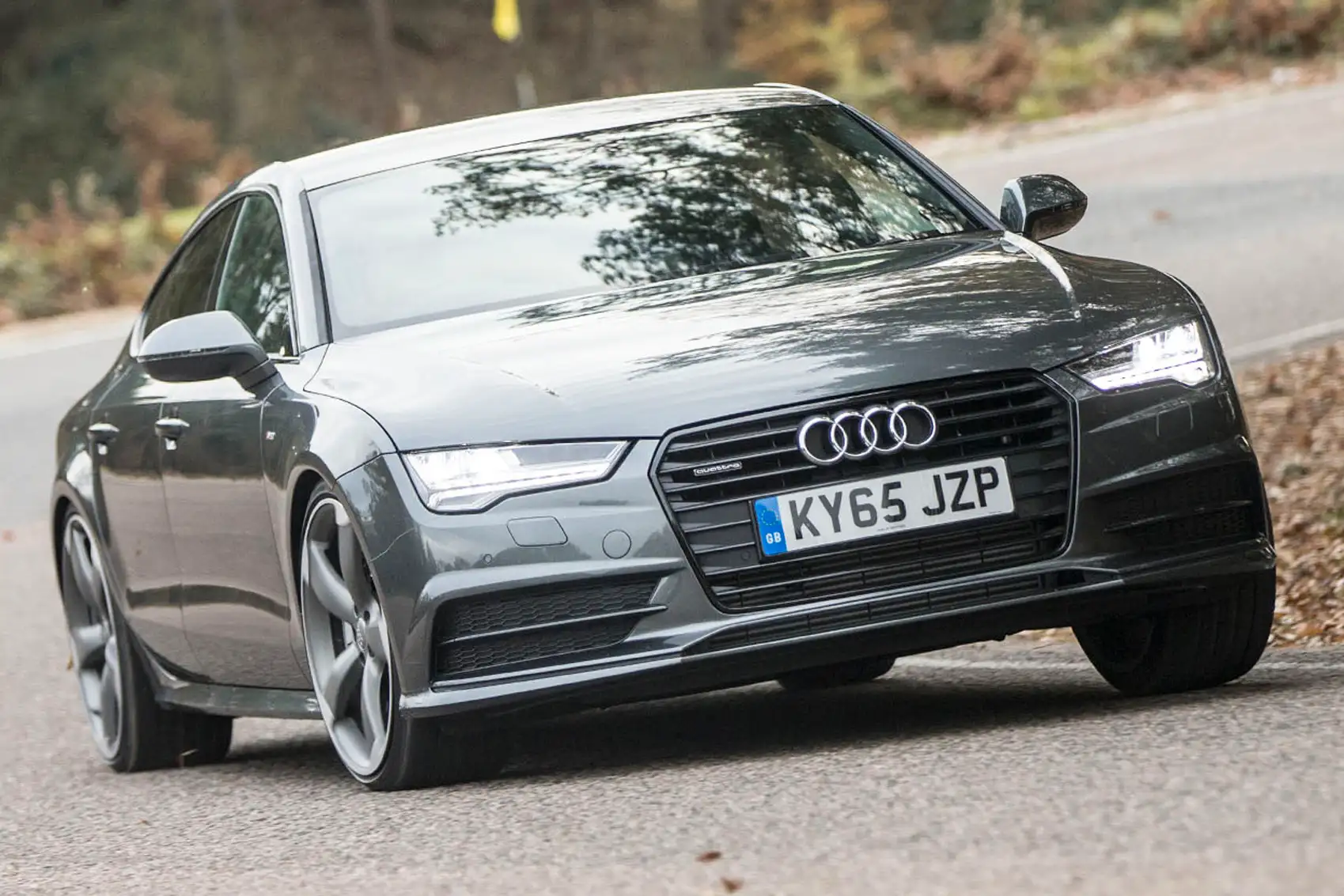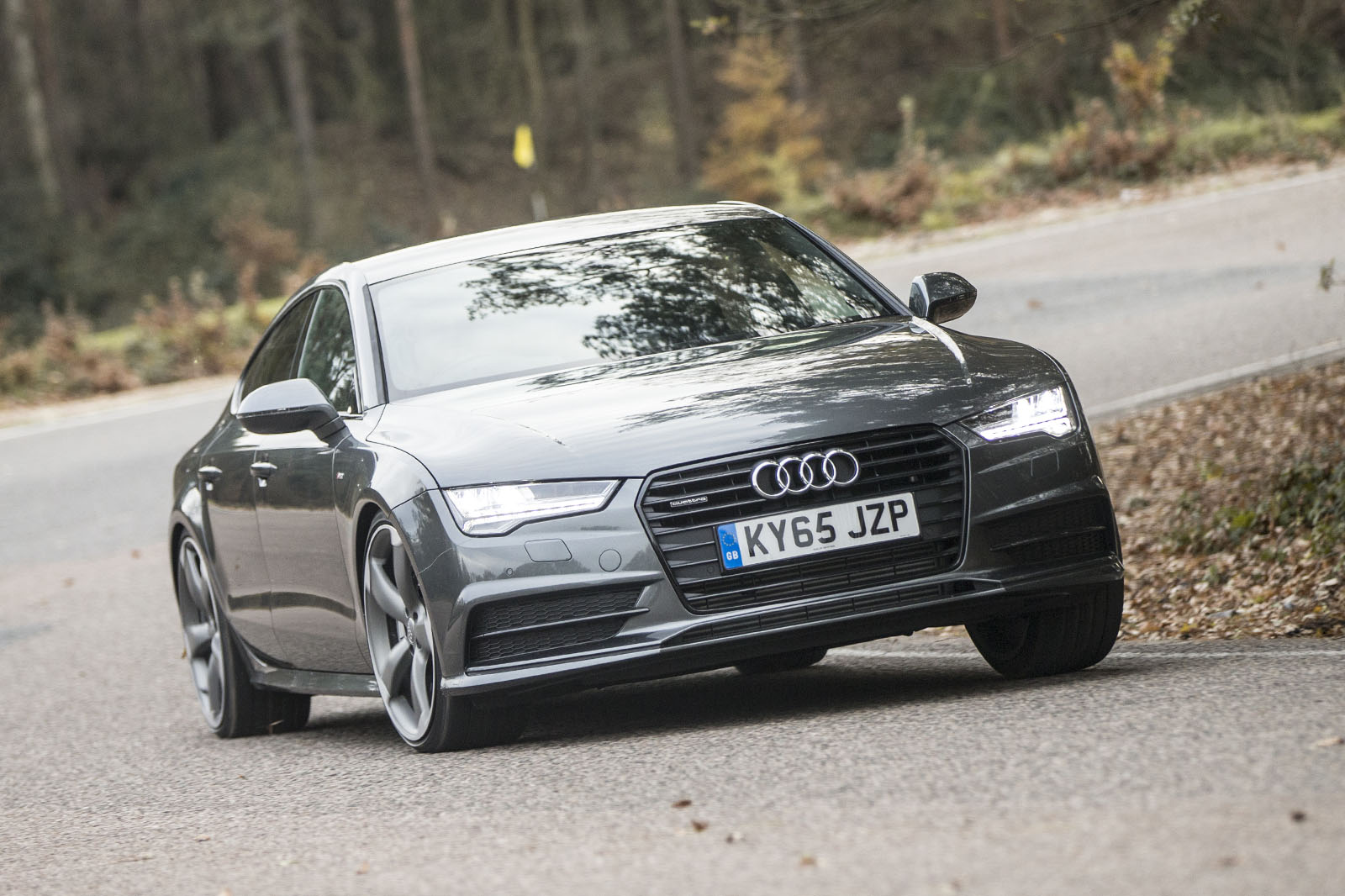Consider the Audi A7 as a five-door coupé and you won’t be disappointed by its cabin space. This is a long, low car, and it feels that way when you get in. The tall must stoop to enter, especially in the rear.
You also sit a lot lower than in conventional saloons of this size. The fastback roofline will scuff the scalps of those over 6ft tall in the rear. Up front it’s more spacious, although this is a cocooning cabin rather than one offering veldts of space.
However, it’s the interior’s sculpture, craftsmanship and trimmings that will make more impact. The subtly swooping dashboard and door inserts, the precision machining of the aluminium centre console controls and the showy arrival of the infotainment screen from a slot in the dash all create an alluring first impression.
And one that lasts, because this cabin is the finely constructed, rattle-free environment we’ve come to expect from Audi. The dash is quite busy but not over-elaborate, the same applying to the angled, multi-layer instruments and driver information screen.
Despite the emphasis on style, there’s decent storage for odds and ends in the cabin. The boot is long, if a little shallow, but you can fold the asymmetrically split rear seats to create a sizeable load deck. These seats are decently comfortable, but the front seats are positively sumptuous. In optional Comfort form they come with air-bladder adjustment of the side bolster and lumbar support (not essential), while ventilation and massage functions are further options.
There are three main trim levels to choose from - SE Executive, S-line and Black Edition. Opt for the entry-level A7 trim and you'll find 19in alloys, LED headlights and rear lights, a powered tailgate, parking sensors, auto lights and wipers, and a retractable rear spoiler. Inside there is Audi's MMI infotainment system including a 6.5in retractable screen, sat nav, DAB radio, Bluetooth and USB interface. There is also a leather upholstery, four-zone climate control and heated front seats all included as standard.
Upgrade to the S-line trim gets the addition of 20in alloys, sports suspension, matrix LED headlights, a sporty bodykit, sports seats and touches of Alcantara, while the range-topping Black Edition gets a black styling pack, 21in alloy wheels, a Bose sound system and bigger alloys.
Fancy an S7 and you'll have two choices. The standard car gets 20in alloy wheels, adaptive air suspension, a sports differential and Audi's cylinder-on-demand and active noise cancellation technology. Inside there is super sports seats, electrically adjustable front seats, a Valcona leather upholstery and lots of carbon and aluminium interior trims. The Black Edition model gets 21in alloy wheels, gloss black exterior trim, tinted rear windows and a Bose sound system.
Topping the current Audi A7 range is the RS7 models, which get 20in alloys, an RS-specfic adaptive suspension and braking system set-up, an aggressively styled bodykit, a dual-exhaust system, a slide and tilt sunroof, a Valcona leather upholstery and adjustable steering column and front seats. Dominating the dashboard is Audi's MMI infotainment system with a retractable 8.0in infotainment system, sat nav, DAB radio, DVD player, Bluetooth connectivity, a 10GB hard drive, a14-speaker Bose speaker system and a head-up display.
Topping the range is the RS7 Performance, which not only teases a few more bhp from the 4.0-litre V8, but also includes 21in alloy wheels, a titanium exterior style pack, a leather and Alcantara upholstery, and a sports exhaust.


